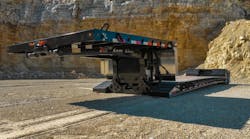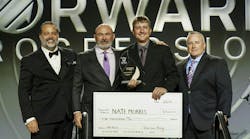SHOP LABOR typically produces the highest profit margins of any other department in a trailer dealership. So when management can find ways for technicians to become a little more effective, it can have a big impact on the bottom line.
A recent webinar put on by the National Trailer Dealers Association was designed to do just that — provide a systematic way to identify potential improvements.
The good news, according to Allen Phibbs with Keith Ely & Associates, is that so much of what can be done to improve shop profitability is well within the control of the company. More than 80% of customer problems are caused by the processes and procedures that shops implement — or fail to follow — rather than unforeseeable events that sometimes occur.
Phibbs underscored the importance of getting the most from the service department, comparing labor hours to parts and equipment inventory. While it's easy to pay attention to the inventory in the parts warehouse or out in the yard, the “inventory” in the shop is especially critical because it is “invisible” and difficult to measure. The inventory in the service department is the amount of labor hours that are available for sale. Unlike other inventory, if shop hours are not sold today, they are lost.
“The technician is the largest gross profit producer in the dealership,” Phibbs said. “The goal should be to maximize the gross profit produced by each technician.”
Phibbs pointed to several general areas to look for additional profits in the shop. In addition to the shop itself, other areas affecting the profitability of the service department include:
-
The parts department. The interaction between parts and service can have a major impact on the amount of work technicians can produce. Studies show that technicians spend more than 21 minutes on average waiting for parts. This includes walking to the parts counter, waiting to be waited on, waiting while parts department personnel check to see if the desired part is available, waiting while parts are pulled, and walking back to service bay.
“Often the most visible and talked about efficiency improvement opportunity is reducing the time technicians spend waiting for parts,” Phibbs said.
-
How efficiently the parking lot is maintained. An unorganized lot adversely impacts technician efficiency, Phibbs said. Studies show technicians spend more than 19 minutes per repair order locating and moving equipment in unorganized lots. According to research that Phibbs cited, technicians locate and move equipment into the shop in less than eight minutes when on average when the lot is organized.
-
Inefficiencies in information flow.
Making parts, service mesh
Phibbs offered several suggestions for making the parts and service departments work together more smoothly. His ideas included:
-
Using parts lists, parts runners, and/or an in shop parts coordinator.
-
Time/date stamps are recommended for tracking purposes.
-
Providing technicians direct access to bolt bins and oil kits reduces waiting.
-
Parts lists, parts runners, and direct access to key parts alleviates bottlenecks and improves efficiency in both service and parts departments.
-
Employing in shop parts coordinators with tablet PCs to place orders and deliver parts almost eliminates waiting for parts.
Phibbs suggested that dealers consider developing a pay plan for parts personnel that is tied to the proficiency of shop technicians.
Improving shop inefficiencies
Unorganized, congested, and dirty shops promote inefficiency, Phibbs said. Technicians spend billable hours searching for mundane items such as benches, trash barrels, and rag barrels. Studies indicate that technicians can spend over five minutes per repair order searching for shop equipment and tools.
To improve shop efficiency, Phibbs suggested the following:
-
Using a tool organization service for shop tools to increase the probability tools will be returned to their correct locations.
-
Color coding can also be used to indicate type of tool.
-
Placing most frequently used shop equipment and tools closest to the technicians. This reduces walking.
Efficiency improvements have been shown to reduce the time spent searching for shop equipment and tools by more than 60% — or three minutes per repair order.
Your biggest opportunity
The best way to improve shop efficiency to improve the way information flows, Phibbs said.
Studies indicate technicians wait for more than 100 minutes per repair order for estimates, customer authorizations, vendor warranty authorizations, technical advice, results from test drives, next job assignments, and more.
Because of bottlenecks in the flow of information, it is not unusual for more than on technician to be waiting at the same time. The causes for the delays vary from shop to shop, but here are some of Phibbs' suggestions:
-
Draw up explicit processes that provide technicians with timely and accurate information.
-
Assign technicians another job while estimates, customer authorizations, vendor warranty authorizations, and results from test drives are being processed.
-
Prepare repair orders before technicians finish their current job.
By making a few changes, dealers can save almost an hour per work order. The average today, he said, exceeds 100 minutes per work order. This can be trimmed to less than 46 minutes, he said.








